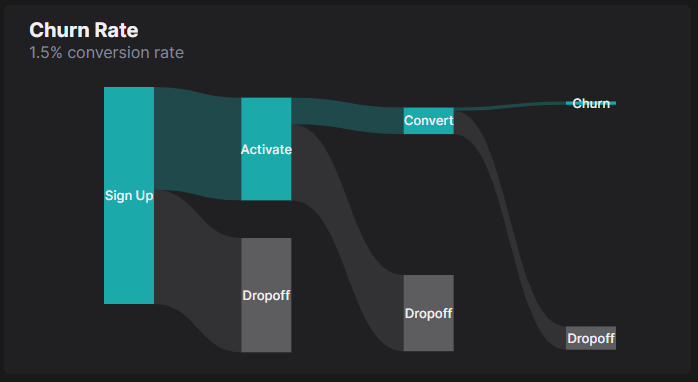How to Build a Successful Product Launch Strategy
Companies use various strategies to promote their products and services. A good product launch strategy involves research, testing, and actions from different departments to make sure your customers buy your product.
If you have a new product/service that you want to introduce to the market, you should give importance to your product launch strategy.

If you are interested in giving your product a successful launch, keep reading.
What is a product launch strategy?
A product launch strategy is a plan designed to deliver a new product to the market. It involves several steps and actions from different teams and departments, leading up to your product launch. A product launch strategy includes sharing new features or products to get people to use your product and grow the brand as much as possible.
Why relying solely on word-of-mouth is holding you back

Using word-of-mouth on launch can deliver a lot of benefits, but many things can go wrong if you are solely relying on it. Here are some:
- You can’t control what people say
What your customers will say about your product is up to them. There is no guarantee that they will say anything to their friends or co-workers at all.
The problem is no matter how good your marketing or customer experience may be, they may still have something negative to say and this can hold you back despite your successful efforts. - It limits your reach
No matter how many happy customers you have, it is always tricky to find enough willing customers to review your product/service and then tell about the value of your product/service to their friends or co-workers.
And even if you do find enough, it is unlikely that most of those word-of-mouth promotions will generate leads that actually convert, or drive prospects to your business.
Of course, it is impossible to earn a 100% conversion rate through any single marketing or promotion method. But it is especially tricky with word-of-mouth marketing as you will almost be limited to the number of satisfied customers willing to promote your company.
- It is too easy for things to go bad in the eyes of the press, too fast.
As you know, people can be unpredictable. No matter how careful you have been with your strategy, someone can damage your launch as fast as they can praise it, and sometimes for no reason.
And getting bad press right around the launch isn’t the best for your business.
How a product launch strategy creates awareness and earns consideration from potential buyers
A product launch strategy is critical for your product regardless of your company’s size or the industry you operate in.
It is important because it helps you better attract customers’ attention and gain momentum in the market. With a well-thought-out and properly executed product launch strategy, your prospects will not only discover your new product/service but also learn about your company and possibly the other offerings you might have. Having your target audience familiarized with you and your products greatly helps your presence and popularity in the market,
A product launch is a great opportunity to turn interested individuals into loyal customers by showcasing your product’s features and benefits, giving them information about it, and helping them see the value it holds.
It also can help improve your company’s reputation. By delivering a product that meets your customers‘ needs, you show you value their opinion and experience. They might develop a certain admiration for you and can become promoters for your brand, creating increased exposure. This way you can attract more customers, therefore, more revenue.
Building a product launch strategy
I told you several things about a product launch strategy above, now let’s have a look at how you can build a successful launch strategy.
Here are a few steps to build a product launch strategy.
Conduct user research
The first step of your strategy should be to find out if people are interested in your product. To discover what your audience wants, you can start by looking at your business data.
For example, measure your product-market fit and make sure you are serving the right product to the right customer audience, or look at what your competitors did that made their product launch successful.
Analyze the market and your competitors
Analyze the market to find similar products. Make a list of your competitors, write down their weaknesses and strengths, and do the same with your business too. When you compare this data, define why customers might choose you. Those key points are essential for your launch.
Define your USP
A unique selling point (USP) is a factor that differentiates your product from its competitors. For example, the lowest cost, the highest quality, the first of its kind, etc.
A USP can be thought of as “what you have that your competitors don’t”
Once you define it, you can adjust your marketing efforts and launch strategy to suit your claim, and communicate it through several channels such as advertisements, social media, blog posts on your website, etc.
Embrace omnichannel promotion
Omnichannel marketing is a customer-centric approach in which your company gives access to your products, offers, and support to customers on all channels, platforms, and devices.

Omnichannel promotion is a method where you promote your product/service across all channels, devices, and platforms available. Omnichannel promotion ensures you reach your customers where they are with a relevant offer.
By uniting the strengths of each communication channel, your marketing team can use omnichannel marketing to deliver a more effective message. You can also reach target buyers at the right time, increasing the chances of converting them with the help of several channels you operate on.
Collect and incorporate feedback
Customer feedback allows companies to better understand what is working and what is not. To have the successful launch you want, it’s important to understand what your customers want and expect from you.
To do that, reach out to them, track your online reviews, turn back to negative feedback to learn why, and conduct surveys with the help of a tool like HockeyStack to create and conduct in-site surveys in seconds easily.

Analyze product adoption with HockeyStack
Product adoption is one of the most important indicators of a company’s health. Users go through several stages before reaching adoption, which is the last stage in the adoption funnel. So if your audience makes it that far, this indicates that your product is valuable enough to help them achieve their goals.
You can do that with the help of a tool like HockeyStack which unifies all your data in one place with an easy-to-use interface and five-minute installation time.
Here are a few metrics you can track around the time of your product launch:
1. Conversion rate
Your conversion rate compares how many people look at your product versus how many people convert and become a customer.
For example, with the help of this metric, you can measure the percentage of people that signed on for a free demo and decided to pay for the actual product to have an idea about the success of your product.
It is calculated with the following formula.
Conversion rate = (conversions / total visitors) x 100
Here’s a screenshot of a sales conversation rate funnel from HockeyStack’s live demo:
2. Adoption rate
The feature adoption rate is measured by the number of customers using a feature.
This metric helps you identify features that suffer from adoption friction where the users simply aren’t aware of a feature or it takes too long for them to understand how to utilize it.
The feature adoption rate will give you an idea of the features that aren’t being used as frequently, allowing you to make any necessary changes.

And again, you don’t need to calculate it yourself as HockeyStack keeps track of it for you.
3. Churn Rate
Eventually, some users will stop using your product. While this is a normal part of the process, it shouldn’t stop you from doing everything you can to stop or slow it down.
You can start by measuring your churn rate. It can be measured by taking the percentage of the number of leaving individuals to the total number of your customers in any given time period.
This metric helps you see how you are doing in your user adoption strategies and according to the churn rate, if your customers are happy with your product or not.

4. Net promoter score (NPS)
The net promoter score we know and love.
People don’t recommend products or services they are neutral to. If someone recommends your product to a friend or co-worker, that means your product is a pretty good solution to a problem that person has and now they are recommending it to others as well, becoming a promoter.
It is a survey-based metric where you ask people questions like,
On a scale of 0 to 10, how likely are you to recommend our business to a friend or colleague?
Typically, anything from 0 to 6 is seen as detractors, 7 and 8 are neutral, and only 9 and 10 are considered promoters.
The formula to calculate your NPS is:
Total % of your promoters – total % of your detractors = your NPS
As I mentioned above, HockeyStack takes care of this for you with its surveys feature where you can create and conduct in-site and in-product surveys in seconds.
Just creating a fabulous product is sadly not enough to reach your goals. A successful product launch strategy is a must for your product or service as it helps people become more aware and knowledgeable about it and hopefully, will make them intrigued enough to give it a try.
Create a fantastic launch strategy now and see your product/service make it to the place it deserves in the market.
FAQs:
What are product launch strategies?
A product launch strategy is a plan designed to deliver a new product to the market which involves several steps and actions from different teams and departments, leading up to your product launch.
What makes a product launch successful?
A successful product launch is one that is created with the market and demand in mind with a lot of planning and research. It should get people talking about your product/service because of what you offer that your competitors don’t.



